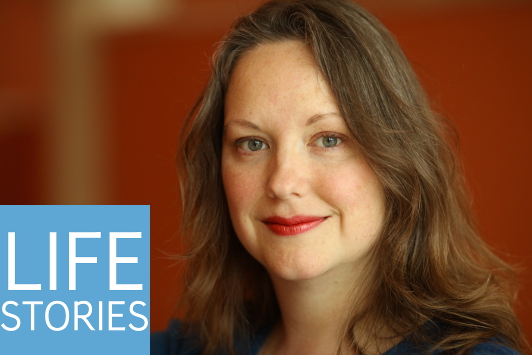Strange Angels of Maryse Meijer’s Youth

photo: Danielle Meijer
Maryse Meijer has an amazing gift for writing about erotic fixation; see the title story in her debut collection, Heartbreaker, for starters. Even stories that aren’t specifically about erotic fixation, like “Shop Lady,” have an unsettling obsessive edge to them. And then there’s stories like “The Fire” and “Fugue” that veer into territory so unnerving they start to feel unreal—not unrealistic, let’s be clear about that, but unreal, or uncanny if you prefer. If the characters and worlds she creates start to remind you of modern horror fiction, well, as Meijer explains in this guest essay, that’s no accident.
I, like most children, grew up with a nose for the forbidden. I read romance novels (the more explicit the better) during math class in the fifth grade, giggled over The Satanic Bible with my twin sister, wrote love poetry about Jeffrey Dahmer, plundered the local video store for the goriest, tackiest B horror movies. I wanted to be shocked and to prove to myself that I was unshockable, and in the 1990s, before the internet was a given, you had to do a little digging to get to the good stuff.
For me, that meant stalking the book section of the local Tower Records, the only source of “alternative” reading material; I pored over anthologies of crime scene photographs, Robert Crumb’s racier comics, pocket-sized ‘zines with titles like Murder Can Be Fun. Only the Penthouses and Playboys were off limits, wrapped in cellophane and displayed out of arm’s reach; everything else, including plenty of explicit material, was easily accessible. No “adults only” section, no eagle-eyed employees monitoring the reading habits of a ten-year-old with her nose planted deep in an essay about Bob Flanagan’s erotic escapades in a hardware store. Heaven.
It was in the horror section of Tower Records that my life as a writer got its first big kick in the ass. I was probably looking for Anne Rice when a glossy black trade paperback caught my eye, its spine dripping with spiky red letters: Strange Angels. By someone named Kathe Koja. Some books speak to you from the shelf, by whatever mysterious magic of title/cover art/aura; this one grabbed me by the neck. I opened it up and started reading, sitting on a step stool, Smashing Pumpkins pumping through the store speakers. Here, finally, was the book I’d been looking for, the book that I hoped was out there, the book that I wanted other books to be, told in an edgy, stream-of-consciousness voice that shot me dead.
24 July 2016 | selling shorts |
Life Stories #84: Emily Winslow
In the winter of 1992, Emily Winslow was a young theater major getting ready for her next semester when she was followed into her building by a stranger who then forced his way into her apartment and raped her. Over the years, she had kept in touch with the sex crimes unit of the Pittsburgh police, even after she moved to Cambridge, England. Then, in 2013, the DNA evidence finally produces a match. The suspect is arrested, and the path to justice begins. Jane Doe January is Winslow’s account of the months that followed—including her frustration when many of those close to her, unsure of how to address the situation, kept an emotional distance that was, just then, the very last thing she needed.
In our conversation, we talk about that, and about why she maintains that what she did isn’t “brave,” and didn’t bring her “closure.” She also dispels an assumption I had made about the journals she was keeping throughout these events, and how it was only later that she decided to turn them into a memoir. No, she told me, this was the plan all along:
“People talk about writing about traumatic experiences as being therapeutic, because it helps you get it out of you. That is true, but for me, that is step one. For me, what’s therapeutic about it is not just letting it out; it’s letting it out and picking it up and using my skills and using my talent to make something that stands alone from me, apart from the crime, and is something beautiful. I wanted to write a beautiful book. I wanted to write a book that was interesting. So for me the therapeutic aspect wasn’t just letting it out. It was, from the very start, crafting it. Because that’s what I do—I use words. That’s what I do.”
Listen to Life Stories #84: Emily Winslow (MP3 file); or download this file by right-clicking (Mac users, option-click). Or subscribe to Life Stories in iTunes, where you can catch up with earlier episodes and be alerted whenever a new one is released. (And if you are an iTunes subscriber, please consider rating and reviewing the podcast!)
photo: Jonathan Player
13 July 2016 | life stories |


 Our Endless and Proper Work is my new book with Belt Publishing about starting (and sticking to) a productive writing practice.
Our Endless and Proper Work is my new book with Belt Publishing about starting (and sticking to) a productive writing practice. 
